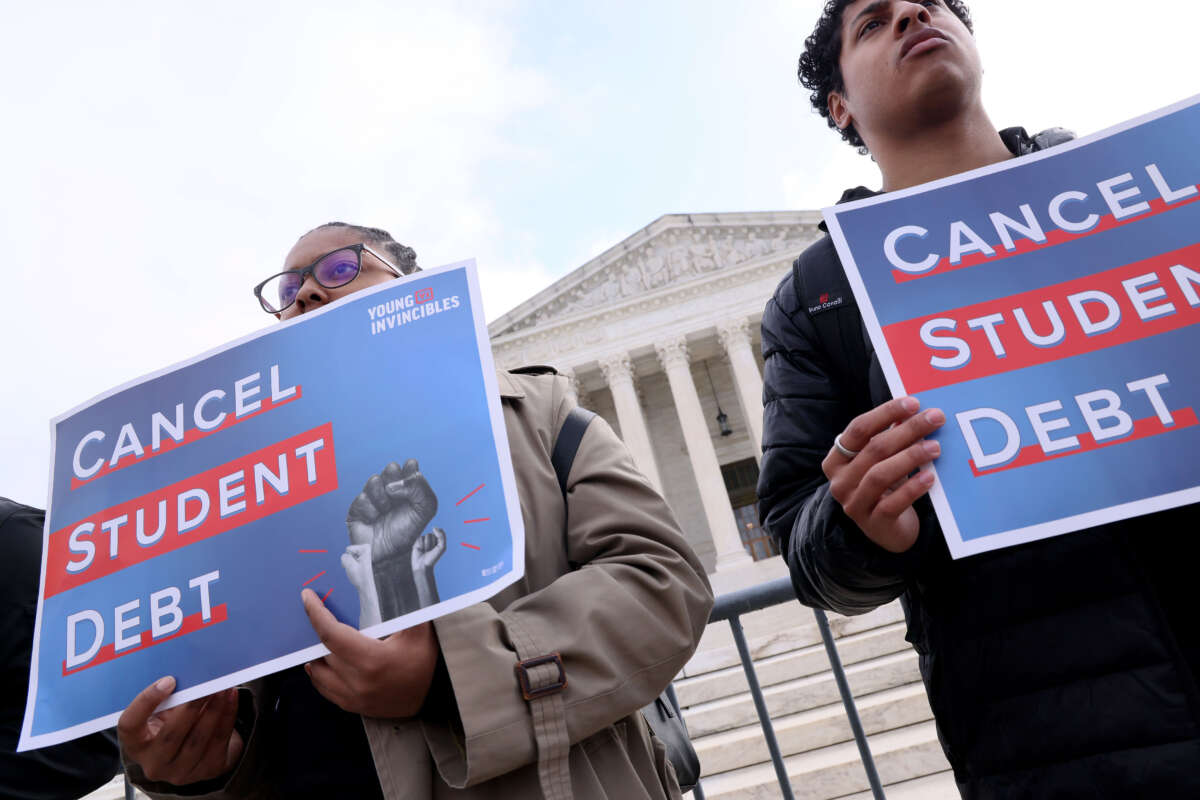Support justice-driven, accurate and transparent news — make a quick donation to Truthout today!
Ending the student loan payment freeze may push millions of people into economic precarity, as almost 7 in 10 student debtors either won’t be able to make student debt payments or will have to cut back spending in other areas when payments resume this year, a new survey found.
The survey results were included in Morgan Stanley’s latest consumer pulse survey of roughly 2,000 people, per Insider. The survey found that only 29 percent of student loan borrowers feel confident that they will be able to afford payments without having to cut spending elsewhere.
Other debtors will face more uncertainty. Thirty-seven percent of borrowers said that they will have to cut spending from other areas, while over a third, or 34 percent, of borrowers said that they will not be able to make payments at all when they restart. The largest impact will be on low-income households, the survey said.
Meanwhile, concerns about making any debt payments or paying rent or their mortgage bills have hit all-time highs, the survey found. Nearly one-third, or 31 percent, said that being unable to repay debts was their number one concern for the year, while 27 percent said that making housing payments was a major concern.
This could have negative impacts on the economy at large. Borrowers will have about $5 billion less a month to spend when payments restart. Six in 10 respondents said that they are likely to cut back spending over the next six months, which could elevate the risk of a recession, which economists are projecting to happen within the next year.
The end of the student loan payment pause is the latest pandemic-spurred economic initiative to come to an end, in addition to Medicaid and the expanded child tax credit, which may plunge millions of Americans into financial uncertainty.
Because the recent debt ceiling bill ends the student loan payment pause and prohibits the Biden administration from extending it again, payments are restarting for the first time in over three years this October.
Additionally, the Supreme Court appears ready to revoke Joe Biden’s student debt relief plan, with a decision on the matter coming this week, leaving the vast majority of borrowers with no debt relief amid an imminent economic downturn.
Progressive lawmakers and organizers have vowed to push the White House to pursue other avenues for student debt relief after the likely ruling against the plan. In 2021, for instance, the Debt Collective crafted an executive order for no Biden that would cancel all student loan debt, if he signed the order.
“With the flick of his pen he can make all federal student loan debt disappear,” the group said.
Press freedom is under attack
As Trump cracks down on political speech, independent media is increasingly necessary.
Truthout produces reporting you won’t see in the mainstream: journalism from the frontlines of global conflict, interviews with grassroots movement leaders, high-quality legal analysis and more.
Our work is possible thanks to reader support. Help Truthout catalyze change and social justice — make a tax-deductible monthly or one-time donation today.
